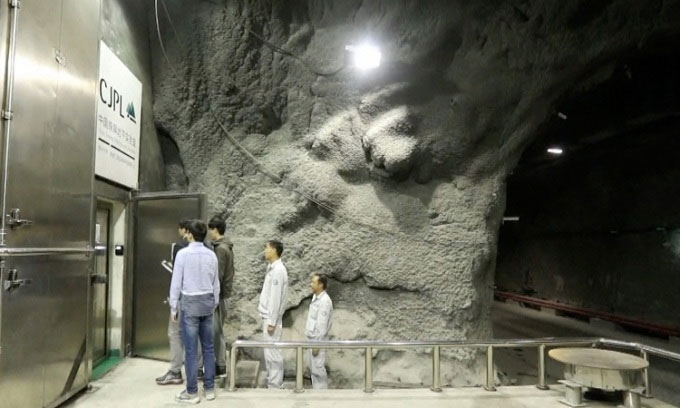The World’s Deepest Nuclear Physics Laboratory Allows Researchers to Simulate Reactions in a 13.6 Billion-Year-Old Star’s Core.
A team of scientists led by Liyong Zhang, a researcher at Beijing Normal University, is working to uncover the mysteries of ancient stars by conducting nuclear fusion reactions in an underground laboratory, according to Interesting Engineering. By operating deep underground, their equipment can avoid cosmic radiation that reaches the Earth’s surface.

CJPL Laboratory nestled in the mountains. (Photo: CGTN)
The nuclear fusion experiments were detailed by the research team on October 26 in the journal Nature, conducted 2.4 kilometers beneath the Jinping Mountains in China. The results help explain the long-standing mystery surrounding one of the oldest stars ever discovered.
Astronomers have long sought to directly observe stars classified as “Population III,” believed to have formed 250 million years after the Big Bang. One such star, named SMSS0313-6708, is approximately 13.6 billion years old and is among the oldest stars ever found. SMSS0313-6708 is located 6,000 light-years from Earth, and its high calcium density has puzzled scientists, as it exceeds expectations for such an ancient star.
To clarify this mystery, Zhang and his colleagues simulated nuclear reactions that would allow ancient stars to produce heavy elements, including calcium. They conducted their simulations in the Jinping Underground Laboratory (CJPL), which features a tunnel 2,400 meters deep beneath the mountains. This is the deepest laboratory in the world dedicated to particle and nuclear physics experiments. The underground facility shields sensitive equipment used in nuclear fusion experiments from cosmic radiation interference. Zhang’s team discovered a specific reaction that could explain the high calcium levels in SMSS0313-6708. “SMSS0313-6708 is an extremely metal-poor star, believed to be a direct descendant of the first generation of stars that formed in the universe after the Big Bang,” the researchers concluded.


















































